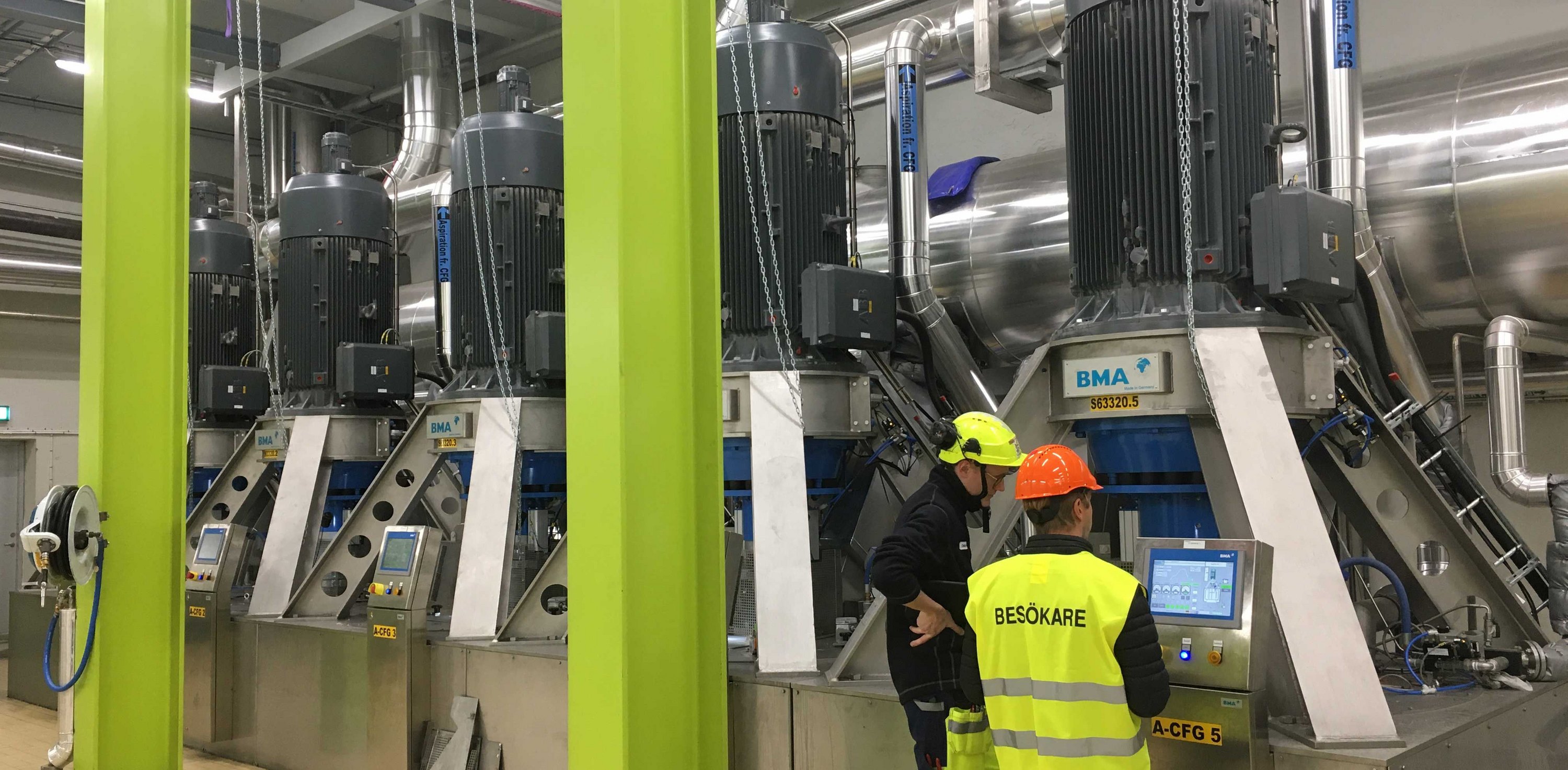
01.07.2020
More performance, less complexity
BMA upgrades Nordzucker sugar house in Örtofta
Nordzucker have closed the production of refined sugar at Arlöv and moved it to Örtofta, expanding and upgrading their sugar house at the new southern Swedish site in the process – with the help of BMA.
In mid-2017, BMA had received an enquiry with supporting documentation. The customer wanted to replace the existing batch centrifugals, in order to increase the processing capacities for R1, A and B massecuite. The scope also included supply of a drum dryer and cooler for the R1 and A sugar flows, which are brought together in a screw conveyor.
Even sugar flow, fewer voltage spikes
Two centrifugals for R1 product and five machines for A product share a discharge screw. The added sequential control system with optimum synchronisation, i.e. overlapping of the acceleration and deceleration ramps, ensures an optimised, even discharge flow. In addition to maintaining a constant sugar flow via the discharge screw, this largely prevents the occurrence of voltage spikes in the factory grid as well. The three centrifugals processing B massecuite, which are grouped together in a separate sequencing group, enjoy the same benefits provided by the sequential control system. This and the individual centrifugal control systems communicate with the Foxboro factory control system via a data bus.
All centrifugals are equipped with special sensors to reduce the amount of wash water used. Water is no longer added at a specific preset time but as required, depending on the syrup discharge progress. Although it is still possible to use a generous preset time frame that covers all variations as an aid, this is no longer necessary.
A real asset: stainless steel centrifugals
The centrifugals, including the motor mounts, are made almost entirely from stainless steel – and thus well above today’s material standard. As a result, they need not be painted, which prevents contamination of the product with paint particles.
During the course of the project, we discussed what motor power the centrifugals would need for the individual products and the relevant product volumes. A key issue in these discussions were power reserves. We found a straightforward solution that also simplifies spare parts management: all ten centrifugals for the different products come with the same motor. An added bonus are the power reserves, which achieve a throughput that, especially for A and B product, is well beyond the required level.
No need for a separate sugar cooler
As mentioned above, centrifuged R1 and A product is discharged via a shared discharge screw. Screw conveyors take it to two drum dryers, which are, in fact, combined dryers and coolers. Thanks to this design, there was no need to plan for a separate sugar cooler.
Since Nordic Sugar had ordered the centrifugals and the drying/cooling system together, BMA had overall technical responsibility for the project and was therefore able to achieve an excellent system performance for the mixture of R1 and A product. We ensured that the residual moisture and temperature levels at the end of the drying process would be as required for silo storage, based on the given massecuite parameters.
